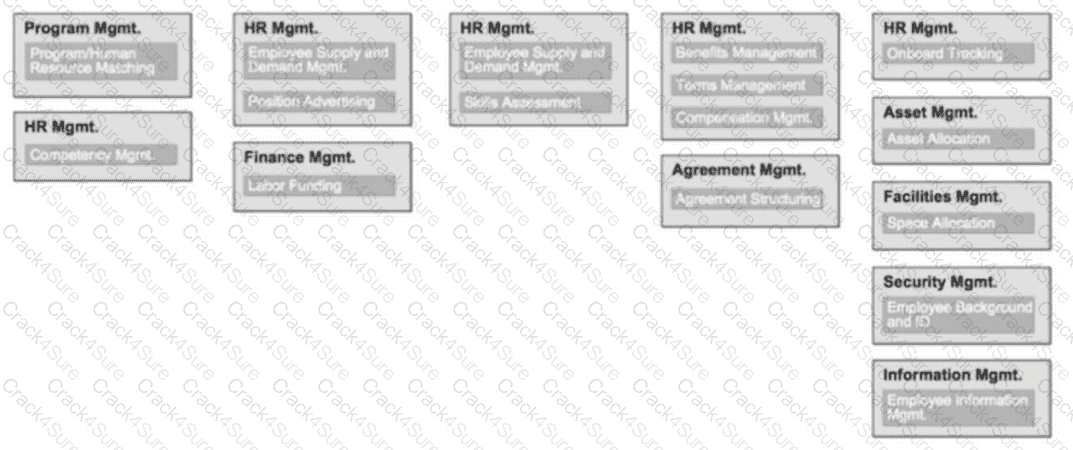We at Crack4sure are committed to giving students who are preparing for the The Open Group OGBA-101 Exam the most current and reliable questions . To help people study, we've made some of our TOGAF Business Architecture Foundation Exam exam materials available for free to everyone. You can take the Free OGBA-101 Practice Test as many times as you want. The answers to the practice questions are given, and each answer is explained.
Consider the following chart:
Which important concept for Enterprise Architecture Practitioners does it illustrate?
Which of the following best describes a business model?
When considering the scope of an architecture, the architect considers the level of detail for the architecting effort. What is this dimension of the scope called?
Consider the following:
In Phase A a business capability map and a core set of value streams were created while developing the Architecture Vision.
Why would such Architecture Descriptions need to be updated in Phase B?
Complete the sentence. The four dimensions used to scope an architecture are:
Consider the following example using the Business Model Canvas:

What are the segments labeled A, D and I?
In what TOGAF ADM phase is the organization map linked built out with the detail and relationships to overviews in order to understand the needs of the organization?
Which of the following best describes the purpose of a Compliance Assessment?
Consider the following extract of a model showing relationships between Business Architecture concepts:
What is the relationship labeled X?
Complete the sentence A business capability is_________________________________.
Consider the following statement.
Projects may cycle between ADM phases, in planned cycles covering multiple phases.
What does it illustrate?
Consider the following statements;
1. A whole corporation or a division of a corporation
2. A government agency or a single government department
3. Partnerships and alliances of businesses working together, such as a consortium or supply chain
What are those examples of according to the TOGAF Standard?
In which part of a business scenario are business capabilities and value streams modeled?
Which of the following is a benefit of value streams and value stream mapping?
Consider the following output from Phase A:
 What is this an example of?
What is this an example of?
Complete the sentence. A key principle of value streams is that value is always defined from the perspective of the_____________
In the diagram, what are the items labelled A, B, and C?
In business capability mapping, when you have documented all of the business capabilities, what should you do next?
Which of the following is a difference between an organization map and an organization chart?
In the ADM, what is the name for a document deliverable that has completed a review and is approved?
Which of the following best describes why business model innovation should be approached in a structured manner?
What process turns a set of business capabilities into a structure that communicates the right amount of detail to different stakeholder groups?
What Business Architecture concept is most related to an information Map?
What can be introduced to formalize a joint agreement between development partners and sponsors on the deliverables, quality, and fitness-for-purpose of an architecture?
Which of the following lists the components of a business capability?
What is the role of an Architecture Board?
Which of the following is guidance for creating value streams?
Which of the following describes how the Enterprise Continuum is used when developing an enterprise architecture?
In what TOGAF ADM phase should the architect locate existing architecture descriptions to create an information map?
Which of the following best describes a benefit of business models?
Which of the following is a benefit of Value Stream Mapping?
Consider the following example value stream:
What does this show?
Complete the sentence. The purpose of the Preliminary Phase is to:
3 Months Free Update
3 Months Free Update
3 Months Free Update